Themed collection 2019 Journal of Materials Chemistry B HOT Papers

Biomechanical studies on biomaterial degradation and co-cultured cells: mechanisms, potential applications, challenges and prospects
This review provides a comprehensive overview of biomechanical studies on biomaterial degradation and co-cultured cells as well as valuable biomechanical ideas on how to design or optimize cell biomaterial co-culture system.

J. Mater. Chem. B, 2019,7, 7439-7459
https://doi.org/10.1039/C9TB01539F
Fundamentals of cross-seeding of amyloid proteins: an introduction
Misfolded protein aggregates formed by the same (homologous) or different (heterologous/cross) sequences are the pathological hallmarks of many protein misfolding diseases (PMDs) including Alzheimer's disease (AD) and type 2 diabetes (T2D).
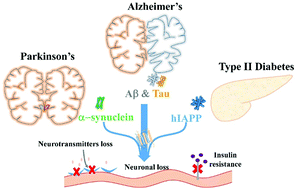
J. Mater. Chem. B, 2019,7, 7267-7282
https://doi.org/10.1039/C9TB01871A
Nanomaterial-based SERS sensing technology for biomedical application
Over the past few years, nanomaterial-based surface-enhanced Raman scattering (SERS) detection has emerged as a new exciting field in which theoretical and experimental studies of the structure and function of nanomaterials have become a focus.
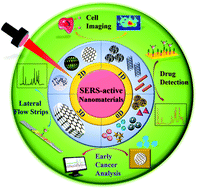
J. Mater. Chem. B, 2019,7, 3755-3774
https://doi.org/10.1039/C9TB00666D
Versatile fluorescent probes for near-infrared imaging of amyloid-β species in Alzheimer's disease mouse model
This review comprehensively discussed the recent progress in the development of NIR fluorescent probes for amyloid-β imaging in vivo.

J. Mater. Chem. B, 2019,7, 1986-1995
https://doi.org/10.1039/C9TB00161A
Photo-triggerable liposomal drug delivery systems: from simple porphyrin insertion in the lipid bilayer towards supramolecular assemblies of lipid–porphyrin conjugates
Light-responsive liposomes are considered nowadays as one of the most promising nanoparticulate systems for the delivery and release of an active pharmaceutical ingredient (API) in a spatio-temporal manner.

J. Mater. Chem. B, 2019,7, 1805-1823
https://doi.org/10.1039/C9TB00015A
Functional nanomaterials with unique enzyme-like characteristics for sensing applications
We highlight the recent developments in functional nanomaterials with unique enzyme-like characteristics for sensing applications.
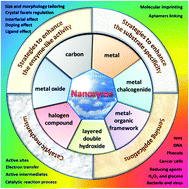
J. Mater. Chem. B, 2019,7, 850-875
https://doi.org/10.1039/C8TB02878H
Equipment-free and visualized biosensor for transcription factor rapid assay based on dopamine-functionalized cellulose paper
Dopamine-functionalized cellulose paper with low cost, portable, and disposable features was applied for an equipment-free and naked-eye detection of transduction factor based on the enzyme-assisted signal amplification/transduction reaction.

J. Mater. Chem. B, 2019,7, 5461-5464
https://doi.org/10.1039/C9TB01455A
Diselenium-containing ultrathin polymer nanocapsules for highly efficient targeted drug delivery and combined anticancer effect
A new highly efficient targeting drug delivery vehicle based on diselenium-containing ultrathin polymer nanocapsules was designed and prepared.

J. Mater. Chem. B, 2019,7, 4927-4932
https://doi.org/10.1039/C9TB01200A
Versatile antifouling coatings based on self-assembled oligopeptides for engineering and biological materials
The existence of nonspecific protein adsorption often results in significant challenges for microfluidic devices and laboratory cultureware used in biological experiments.

J. Mater. Chem. B, 2019,7, 2242-2246
https://doi.org/10.1039/C9TB00084D
Thermo- and photo-responsive composite hydrogels with programmed deformations
Composite hydrogels were fabricated by photolithographic polymerization to form a non-responsive gel and subsequent thermal polymerization to form a dual-responsive gel. These composite gels with heterogeneous structures showed programmed deformations upon heating or light irradiation.
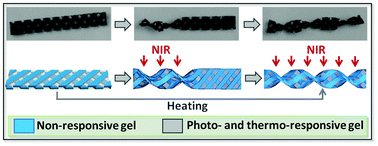
J. Mater. Chem. B, 2019,7, 1674-1678
https://doi.org/10.1039/C8TB02896F
Design of a star-like hyperbranched polymer having hydrophilic arms for anti-biofouling coating
A simple method for anti-biofouling coating based on a star-like hyperbranched polymer having hydrophilic arms.

J. Mater. Chem. B, 2019,7, 1045-1049
https://doi.org/10.1039/C8TB03104E
A non-enzymatic electrochemical biosensor based on Au@PBA(Ni–Fe):MoS2 nanocubes for stable and sensitive detection of hydrogen peroxide released from living cells
Hydrogen peroxide (H2O2) is the main product of enzymatic reactions and plays an important role in biological processes.

J. Mater. Chem. B, 2019,7, 7704-7712
https://doi.org/10.1039/C9TB02059D
Solution viscosity regulates chondrocyte proliferation and phenotype during 3D culture
Chondrocytes are cultured in a 3D biphasic gelatin solution/hydrogel system. Solution viscosity affects chondrocyte functions. High viscosity is more beneficial for cell phenotype maintenance, while low viscosity is more beneficial for proliferation.

J. Mater. Chem. B, 2019,7, 7713-7722
https://doi.org/10.1039/C9TB02204J
The long-term behaviors and differences in bone reconstruction of three polymer-based scaffolds with different degradability
The study suggests a principle for future design and application of bone scaffolds that must have a relatively stable osteogenic space and scaffold interface, or have a degradation speed slower than the time of bone reconstruction completion.

J. Mater. Chem. B, 2019,7, 7690-7703
https://doi.org/10.1039/C9TB02072A
Nanoparticle mediated silencing of tenascin C in hepatic stellate cells: effect on inflammatory gene expression and cell migration
Mesoporous silica nanoparticles efficiently knock-down tenascin-C in hepatic stellate cells resulting in decrease of inflammatory cytokine levels and hepatocyte migration.

J. Mater. Chem. B, 2019,7, 7396-7405
https://doi.org/10.1039/C9TB01845J
A mitochondria-targeted fluorescent probe based on coumarin–pyridine derivatives for hypochlorite imaging in living cells and zebrafish
Herein, a novel coumarin–pyridine derivative (CPD) was prepared and exhibited a rapid response, large Stokes shifts, dual channel detection, high selectivity and high sensitivity toward OCl− in mitochondria of A549 cells and zebrafish.

J. Mater. Chem. B, 2019,7, 7332-7337
https://doi.org/10.1039/C9TB01948K
The controllable growth of ultrathin MnO2 on polydopamine nanospheres as a single nanoplatform for the MRI-guided synergistic therapy of tumors
The integration of two-dimensional (2D) nanosheets with biocompatible photothermal nanoparticles may produce effective multifunctional nanotheranostic agents.
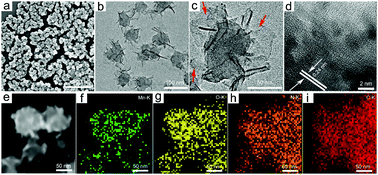
J. Mater. Chem. B, 2019,7, 7152-7161
https://doi.org/10.1039/C9TB02002K
Fenton-reaction-stimulative nanoparticles decorated with a reactive-oxygen-species (ROS)-responsive molecular switch for ROS amplification and triple negative breast cancer therapy
P@P/H NPs were rapidly disintegrated in response to ROS, and this further enhanced ROS level in tumor cells via the Fenton reaction.

J. Mater. Chem. B, 2019,7, 7141-7151
https://doi.org/10.1039/C9TB01702J
D–A polymers for fluorescence/photoacoustic imaging and characterization of their photothermal properties
Two D–A polymers with good NIR-II fluorescence, photoacoustic and photothermal properties were designed and synthesized.

J. Mater. Chem. B, 2019,7, 6576-6584
https://doi.org/10.1039/C9TB01196J
A magnetically modified black phosphorus nanosheet-based heparin delivery platform for preventing DVT accurately
A new heparin targeting delivery platform was developed based on iron oxide (Fe3O4) nanoparticles and polyethyleneimine (PEI) functionalized black phosphorus nanosheets (BP NSs).
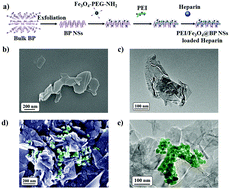
J. Mater. Chem. B, 2019,7, 6099-6108
https://doi.org/10.1039/C9TB01459D
A selective cascade reaction-based probe for colorimetric and ratiometric fluorescence detection of benzoyl peroxide in food and living cells
A colorimetric and ratiometric fluorescent probe (Cou-BPO) was prepared for food analysis and cell imaging; it showed high selectivity, sensitivity, visible and fast response towards BPO via a selective oxidation cleavage-induced cascade reaction.
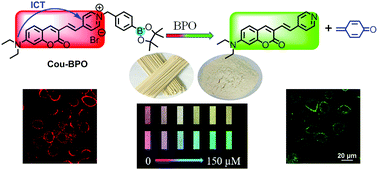
J. Mater. Chem. B, 2019,7, 5775-5781
https://doi.org/10.1039/C9TB00889F
Polyphenol-based nanoplatform for MRI/PET dual-modality imaging guided effective combination chemotherapy
A smart nanoplatform with doxorubicin (DOX) and simvastatin (SV) was fabricated by encapsulating both drugs in a polyphenol-based polymer for chemotherapy and MRI/PET imaging.

J. Mater. Chem. B, 2019,7, 5688-5694
https://doi.org/10.1039/C9TB01597C
Two-isophorone fluorophore-based design of a ratiometric fluorescent probe and its application in the sensing of biothiols
A newly designed ratiometric fluorescent probe is applied in the sensing of biothiols.

J. Mater. Chem. B, 2019,7, 5633-5639
https://doi.org/10.1039/C9TB01671F
A surface-engineered NIR light-responsive actuator for controllable modulation of collective cell migration
A surface-engineered NIR light-responsive actuator has been presented for manipulating collective cell migration by activating mechanical signal transduction in live cells.

J. Mater. Chem. B, 2019,7, 5528-5534
https://doi.org/10.1039/C9TB01038F
Sodium butyrate-modified sulfonated polyetheretherketone modulates macrophage behavior and shows enhanced antibacterial and osteogenic functions during implant-associated infections
Prevention of implant-associated infections and insufficient bone tissue integration is critical to exploit the immunomodulatory properties and antibacterial effects of implant materials, which have attracted considerable attention.

J. Mater. Chem. B, 2019,7, 5541-5553
https://doi.org/10.1039/C9TB01298B
Polyelectrolyte complexation via viscoelastic phase separation results in tough and self-recovering porous hydrogels
Polyelectrolyte complexation is utilized to create bulk, porous hydrogels with high toughness and self-recovery due to reversible ionic associations.
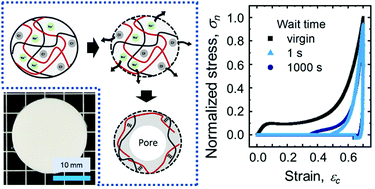
J. Mater. Chem. B, 2019,7, 5296-5305
https://doi.org/10.1039/C9TB01376H
Dual drug-paired polyprodrug nanotheranostics reverse multidrug resistant cancers via mild photothermal-cocktail chemotherapy
A dual drug-paired polyprodrug nanotheranostic PDCN25-CDDP was constructed for the combination therapy PT–CCT to combat multidrug resistant cancers, achieving complete MCF-7/ADR and OVCAR-3/DDP tumor ablation for 30 days.
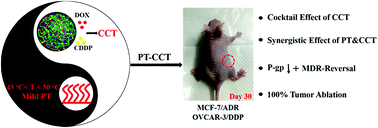
J. Mater. Chem. B, 2019,7, 5306-5319
https://doi.org/10.1039/C9TB01368G
Intelligent protein-coated bismuth sulfide and manganese oxide nanocomposites obtained by biomineralization for multimodal imaging-guided enhanced tumor therapy
Radiotherapy (RT) has been used clinically to overcome cancer in recent decades.

J. Mater. Chem. B, 2019,7, 5170-5181
https://doi.org/10.1039/C9TB00991D
Harnessing combinational phototherapy via post-synthetic PpIX conjugation on nanoscale metal–organic frameworks
Novel photoactive metal–organic framework nanoparticles were developed using a facile post-synthetic conjugation method to achieve tunable combinational PDT and PTT.
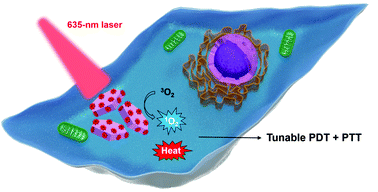
J. Mater. Chem. B, 2019,7, 4763-4770
https://doi.org/10.1039/C9TB01154D
Zinc phthalocyanine activated by conventional indoor light makes a highly efficient antimicrobial material from regular cellulose
A phthalocyanine-cellulose material quickly inactivates drug-resistant microbes under indoor light.

J. Mater. Chem. B, 2019,7, 4379-4384
https://doi.org/10.1039/C9TB01095E
Rate-controlled nano-layered assembly mechanism of melamine-induced melamine–uric acid stones and its inhibition and elimination methods
The formation of kidney stones induced by melamine is a rate-controlled nano-scale supramolecular layered assembly process.

J. Mater. Chem. B, 2019,7, 4133-4140
https://doi.org/10.1039/C9TB00688E
2-Dicyanomethylenethiazole based NIR absorbing organic nanoparticles for photothermal therapy and photoacoustic imaging
TPTHM NPs are candidates for PAI/PTT agents due to their NIR absorption, good biocompatibility, high photostability and photothermal conversion efficiency (38%).

J. Mater. Chem. B, 2019,7, 3950-3957
https://doi.org/10.1039/C9TB00808J
BODIPY derivatives as light-induced free radical generators for hypoxic cancer treatment
NBDP can self-assemble into nanoparticles (NBDP NPs), which could be internalized by cells via endocytosis. After being irradiated with an 808 nm laser, the BODIPY unit could convert photons into heat and further initiates the production of alkyl radicals. The generated tumor hyperthermia and alkyl radicals synergistically kill cancer cells.

J. Mater. Chem. B, 2019,7, 3976-3981
https://doi.org/10.1039/C9TB00694J
Hemocompatibility investigation and improvement of near-infrared persistent luminescent nanoparticle ZnGa2O4:Cr3+ by surface PEGylation
ZnGa2O4:Cr3+ hemocompatibility was systematically investigated from the aspects of hemolysis, erythrocyte morphology, coagulation and complement system activation, and greatly improved by surface PEGylation.

J. Mater. Chem. B, 2019,7, 3796-3803
https://doi.org/10.1039/C9TB00378A
Constructing peptide-based artificial hydrolases with customized selectivity
The substrate selectivity of peptide-based artificial enzymes can be customized by combining molecularly imprinted polymers as binding sites with peptide nanofibers as catalytic moieties.
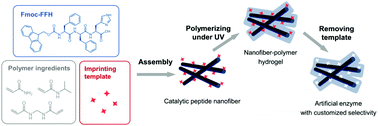
J. Mater. Chem. B, 2019,7, 3804-3810
https://doi.org/10.1039/C9TB00408D
Self-adhesive photothermal hydrogel films for solar-light assisted wound healing
Self-adhesive photothermal hydrogel films can adhere to skin wound and convert solar light into heat, warming up the wound locally and promoting wound repair.

J. Mater. Chem. B, 2019,7, 3644-3651
https://doi.org/10.1039/C9TB00481E
A dual-aptamer-based biosensor for specific detection of breast cancer biomarker HER2 via flower-like nanozymes and DNA nanostructures
A dual-aptamer electrochemical biosensor based on flower-like nanozymes and DNA nanostructures was fabricated for detection of breast cancer biomarker HER2.
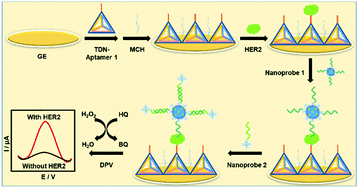
J. Mater. Chem. B, 2019,7, 3661-3669
https://doi.org/10.1039/C9TB00472F
A selenium-containing selective histone deacetylase 6 inhibitor for targeted in vivo breast tumor imaging and therapy
We have developed a HDAC6-selective inhibitor, SelSA, which can be utilized as a target for the detection and treatment of ERα(+) breast cancer and TNBC. The biodistribution study showed that SelSA can specifically target the breast tumor and display potent antitumor effects in vivo. This result will help to better improve the treatment efficacy against breast cancer.
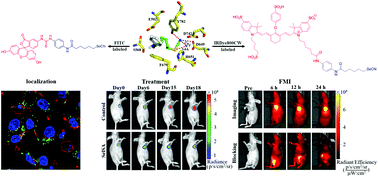
J. Mater. Chem. B, 2019,7, 3528-3536
https://doi.org/10.1039/C9TB00383E
Highly sensitive detection of antibodies in a soft bioactive three-dimensional bioorthogonal hydrogel
This three-dimensional detection method of antibodies offers a high sensitivity and good biomolecule stability for new biosensing devices.

J. Mater. Chem. B, 2019,7, 3220-3231
https://doi.org/10.1039/C9TB00234K
Nitrogen doped carbon dots: mechanism investigation and their application for label free CA125 analysis
Nitrogen-doped CDs (N-CDs) were firstly prepared by using pear juice as the carbon source and ethanediamine as a nitrogen doping precursor with a microwave assisted pyrolysis technique. Based on the fluorescence recovery induced by competitive adsorption and desorption, a label-free “turn on” fluorescence assay with high sensitivity and selectivity was proposed for the analysis of CA125.

J. Mater. Chem. B, 2019,7, 3053-3058
https://doi.org/10.1039/C9TB00021F
Depletion of protein thiols and the accumulation of oxidized thioredoxin in Parkinsonism disclosed by a red-emitting and environment-sensitive probe
Protein sulfhydryl groups play a vital role in maintaining cellular redox homeostasis and protein functions and have attracted increasing interests for the selective detection of protein thiols over low-molecular-weight thiols (LMWTs).
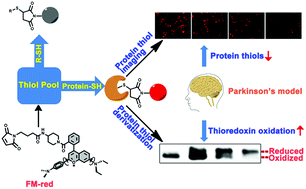
J. Mater. Chem. B, 2019,7, 2696-2702
https://doi.org/10.1039/C8TB03101K
Detection of hypochlorous acid fluctuation via a selective near-infrared fluorescent probe in living cells and in vivo under hypoxic stress
The near-infrared fluorescent probe Cy-HOCl for monitoring HOCl in living cells, zebrafish and mice under hypoxic stress.

J. Mater. Chem. B, 2019,7, 2557-2564
https://doi.org/10.1039/C9TB00079H
An AIE-active theranostic probe for light-up detection of Aβ aggregates and protection of neuronal cells
An AIE-active probe of Cur-N-BF2 is developed for light-up detection of Aβ fibrils and plaques, inhibition of Aβ fibrillation, disassembly of preformed Aβ fibrils, and protection of neuronal cells.

J. Mater. Chem. B, 2019,7, 2434-2441
https://doi.org/10.1039/C9TB00121B
Light-driven ultrasensitive self-powered cytosensing of circulating tumor cells via integration of biofuel cells and a photoelectrochemical strategy
A light-driven self-powered cytosensing platform was developed via integration of biofuel cells and a photoelectrochemical strategy for the detection of circulating tumor cells.

J. Mater. Chem. B, 2019,7, 2277-2283
https://doi.org/10.1039/C9TB00222G
A fluorogenic probe based on chelation–hydrolysis-enhancement mechanism for visualizing Zn2+ in Parkinson's disease models
Developing efficient methods for real-time detection of Zn2+ level in biological systems is highly relevant to improve our understanding of the role of Zn2+ in the progression of Parkinson's disease (PD).
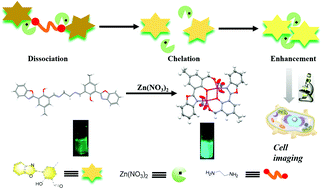
J. Mater. Chem. B, 2019,7, 2252-2260
https://doi.org/10.1039/C8TB03343A
Ordered mesoporous carbon-covered carbonized silk fabrics for flexible electrochemical dopamine detection
Flexible dopamine sensors were fabricated with ordered mesoporous carbon-covered carbonized silk fabrics (OMC/CSFs) as the working electrodes, which exhibited high sensitivity, good selectivity, a large linear detection range of 0.2–80 μM, and a low limit detection of 0.11 μM.

J. Mater. Chem. B, 2019,7, 2145-2150
https://doi.org/10.1039/C8TB03242D
Multipronged design of theranostic nanovehicles with endogenous and exogenous stimuli-responsiveness for precise cancer therapy
Multifunctional nanovehicle with pH and NIR light stimuli-responsiveness for fluorescence imaging and chemo/photothermal combination antitumor therapy.

J. Mater. Chem. B, 2019,7, 1160-1166
https://doi.org/10.1039/C8TB02570C
A universal photoelectrochemical biosensor for dual microRNA detection based on two CdTe nanocomposites
A universal photoelectrochemical biosensor for dual microRNA detection has been successfully developed.

J. Mater. Chem. B, 2019,7, 1133-1141
https://doi.org/10.1039/C8TB03195A
A multifunctional polymeric gene delivery system for circumventing biological barriers
Crucial light-controlled-ROS and pH-stimulus-responsive functionalities are tailored into a triblock copolymer for manufacture of gene delivery vehicles.
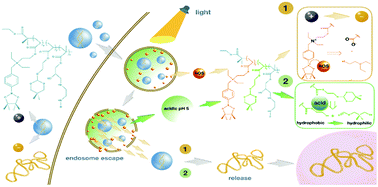
J. Mater. Chem. B, 2019,7, 384-392
https://doi.org/10.1039/C8TB03069C
About this collection
This on-going web collection features all the articles published in Journal of Materials Chemistry B in 2019 marked as HOT, as recommended by referees. Congratulations to all the authors whose articles are featured!